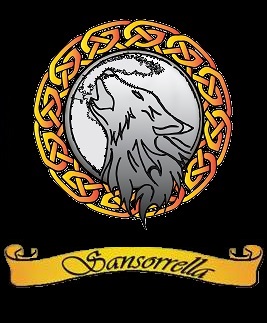|
Results of inbreeding
Inbreeding may result in a far higher phenotypic expression of
deleterious recessive genes within a population than would normally be
expected.[1] As a result, first-generation inbred individuals are more
likely to show physical and health defects, including:
reduced fertility both in litter size and sperm viability
increased genetic disorders
fluctuating facial asymmetry
lower birth rate
higher infant mortality
slower growth rate
smaller adult size
loss of immune system function.
Natural selection works to remove individuals who acquire the above
types of traits from the gene pool. Therefore, many more individuals in
the first generation of inbreeding will never live to reproduce. Over
time, with isolation such as a population bottleneck caused by
purposeful (assortative) breeding or natural environmental stresses, the
deleterious inherited traits are culled.
The cheetah once was reduced by disease, habitat restriction,
overhunting of prey, competition from other predators (primarily lions,
competition from human land use, etc.) to a very small number of
individuals.[2][3] All cheetahs now come from this very small gene pool.
Should a virus appear that none of the cheetahs have resistance to,
extinction is always a possibility. Currently, the threatening virus is
feline infectious peritonitis, which has a disease rate in domestic cats
from 1%-5%; in the cheetah population it is ranging between 50% to 60%.
The cheetah is also known, in spite of its small gene pool, for few
genetic illnesses.
Island species are often very inbred, as their isolation from the larger
group on a mainland allows for natural selection to work upon their
population. This type of isolation may result in the formation of race
or even speciation, as the inbreeding first removes many deleterious
genes, and allows expression of genes that allow a population to adapt
to an ecosystem. As the adaptation becomes more pronounced the new
species or race radiates from its entrance into the new space, or dies
out if it cannot adapt and, most importantly, reproduce.[4]
The reduced genetic diversity that results from inbreeding may mean a
species may not be able to adapt to changes in environmental conditions.
Each individual will have similar immune systems, as immune systems are
genetically based. Where a species becomes endangered, the population
may fall below a minimum whereby the forced interbreeding between the
remaining animals will result in extinction.
In the South American sea lion, there was concern that recent population
crashes would reduce genetic diversity. Historical analysis indicated
that a population expansion from just two matrilineal lines were
responsible for most individuals within the population. Even so, the
diversity within the lines allowed for great variation in the gene pool
that may inoculate the South American sea lion from extinction.[5]
Natural breedings include inbreeding by necessity, and most animals only
migrate when necessary. In many cases, the closest living mate is a
mother, sister, grandmother, father, grandfather... In all cases the
environment presents stresses to select or remove those individuals who
cannot survive because of illness from the population.
In lions, prides are often followed by related males in bachelor groups.
When the dominant male is killed or driven off by one of these
bachelors, a father may be replaced with his son. There is no mechanism
for preventing inbreeding or to ensure outcrossing. In the prides, most
lionesses are related to one another. If there is more than one dominant
male, the group of alpha males are usually related. Two lines then are
being "line bred". Also, in some populations such as the Crater lions,
it is known that a population bottleneck has occurred. Researchers found
far greater genetic heterozygosity than expected.[6] In fact, predators
are known for low genetic variance, along with most of the top portion
of the tropic levels of an ecosystem.[7] Additionally, the alpha males
of two neighbouring prides can potentially be from the same litter; one
brother may come to acquire leadership over another's pride, and
subsequently mate with his 'nieces' or cousins. However, killing another
male's cubs, upon the takeover, allows for the new selected gene
complement of the incoming alpha male to prevail over the previous male.
There are genetic assays being scheduled for lions to determine their
genetic diversity. The preliminary studies show results inconsistent
with the outcrossing paradigm based on individual environments of the
studied groups.[6]
There was an assumption that wild populations do not inbreed; this is
not what is observed in some cases in the wild. However, in species such
as horses, animals in wild or feral conditions often drive off the young
of both genders, thought to be a mechanism by which the species
instinctively avoids some of the genetic consequences of inbreeding.[8]
Inbreeding calculation
The inbreeding is computed as a percentage of chances for two alleles to
be identical by descent. This percentage is called "inbreeding
coefficient". There are several methods to compute this percentage, the
two main ways are the path method[9] and the tabular method[10].
Typical inbreeding percentages are as follows:
Father/daughter - mother/son - brother/sister -> 25%
Half-brother/half-sister -> 12.5%
Uncle/niece - aunt/nephew -> 12.5%
Cousin -> 6.25%
An inbreeding calculation may be used to determine the general genetic
similarity among relatives by multiplying by 2, because any progeny
would have a 1 in 2 risk of actually inheriting the identical alleles
from both parents. For instance, the parent/child or sibling/sibling
have 50% identical genetics.
Inbreeding in domestic animals
Breeding in domestic animals is assortative breeding primarily (see
selective breeding). Without the sorting of individuals by trait, a
breed could not be established, nor could poor genetic material be
removed.
Inbreeding is used by breeders of domestic animals to fix desirable
genetic traits within a population or to attempt to remove deleterious
traits by allowing them to manifest phenotypically from the genotypes.
Inbreeding is defined as the use of close relations for breeding such as
mother to son, father to daughter, brother to sister. Breeders must cull
unfit breeding suppressed individuals and/or individuals who demonstrate
either homozygosity or heterozygosity for genetic based diseases.[11]
The issue of casual breeders who inbreed irresponsibly is discussed in
the following quotation on cattle:
Meanwhile, milk production per cow per lactation increased from 17,444
lbs to 25,013 lbs from 1978 to 1998 for the Holstein breed. Mean
breeding values for milk of Holstein cows increased by 4,829 lbs during
this period[12]. High producing cows are increasingly difficult to breed
and are subject to higher health costs than cows of lower genetic merit
for production (Cassell, 2001). Intensive selection for higher yield has
increased relationships among animals within breed and increased the
rate of casual inbreeding. Many of the traits that affect profitability
in crosses of modern dairy breeds have not been studied in designed
experiments. Indeed, all crossbreeding research involving North American
breeds and strains is very dated (McAllister, 2001) if it exists at all.
Linebreeding, a specific form of inbreeding, is accomplished through
breedings of cousins, aunt to nephew, half brother to half sister. This
was used to isolate breeds within the companion and livestock industry.
For instance an animal with a desirable colour is bred back within the
lines with identified selection traits whether it be milk production or
adherence to breed standard of appearance or behaviour. Breeders must
then cull unfit individuals, and in some cases the breeders will then
outbreed to increase the level of genetic diversity. Again casual
breeding is problematic as it is without the requisite culling of
individuals who are either maladaptive, not to breed standard or
carriers of poor genetic material that must be removed from a healthy
breeding program.[14]
Outcrossing is where two unrelated individuals have been crossed to
produce progeny. In outcrossing, unless there is verifiable genetic
information, one may find that all individuals are distantly related to
an ancient progenitor. If the trait carries throughout a population, all
individuals can have this trait. This is called the founder's effect. In
the well established breeds, that are commonly bred, a large gene pool
is present. For example, in 2004, over 18,000 Persian cats were
registered.[15] A possibility exists for a complete outcross, if no
barriers exist between the individuals to breed. However it is not
always the case, and a form of distant linebreeding occurs. Again it is
up to the assortative breeder to know what sort of traits both positive
and negative exist within the diversity of one breeding. This diversity
of genetic expression, within even close relatives, increases the
variability and diversity of viable stock.[16]
The two dog sites above also point out that in the registered dog
population, the onset of large numbers of casual breeders has
corresponded with an increase in the number of genetic illnesses of dogs
by not understanding how, why and which traits are inherited. The dog
sites indicate that the largest percentage of dog breeders in the US are
casual breeders. Therefore the investment in a papered animal, with an
expected short term profit, motivates some to ignore the practice of
culling. Casual breeders in companion animals often ignore breeding
restrictions within their contracts with source companion animal
breeders. The casual breeders breed the very culls that a genetics based
breeder has released as a pet. The casual breeder also was cited in the
quotes above on cattle raising.
|




![]() Sansorrella 2019 All rights reserved
Sansorrella 2019 All rights reserved